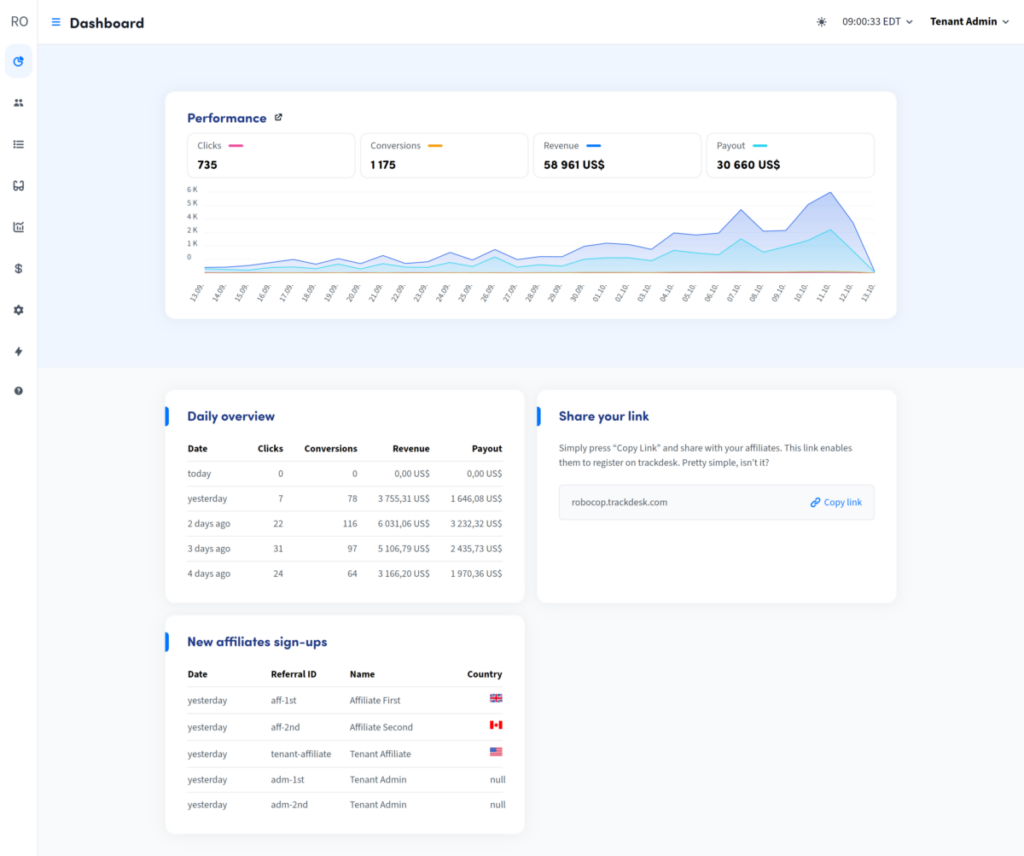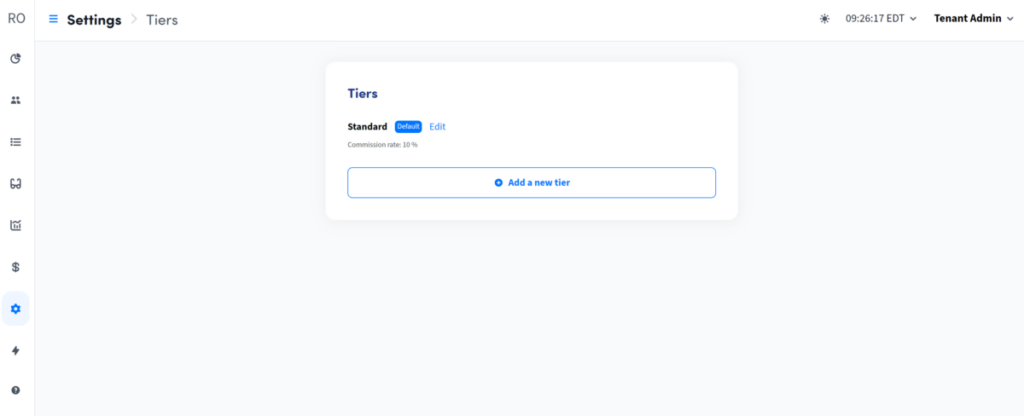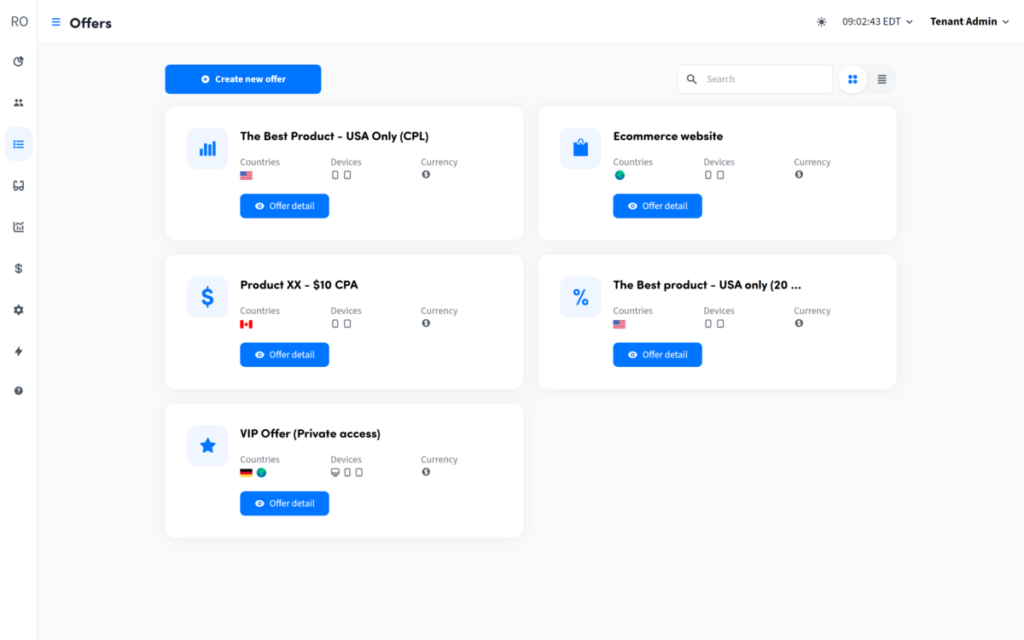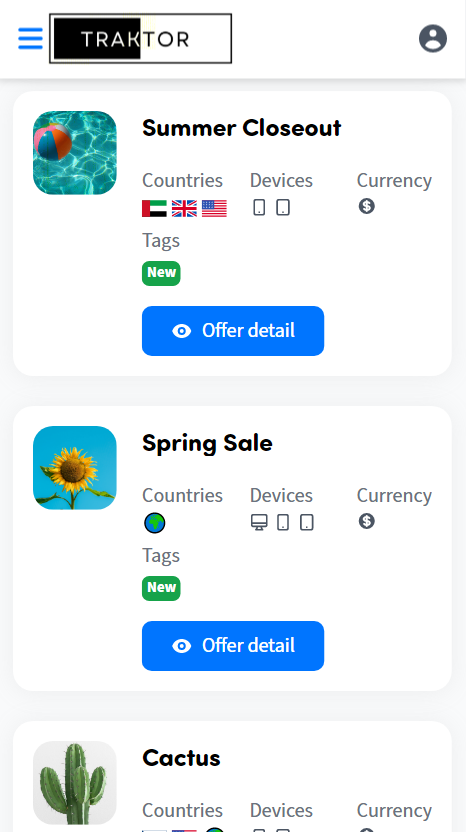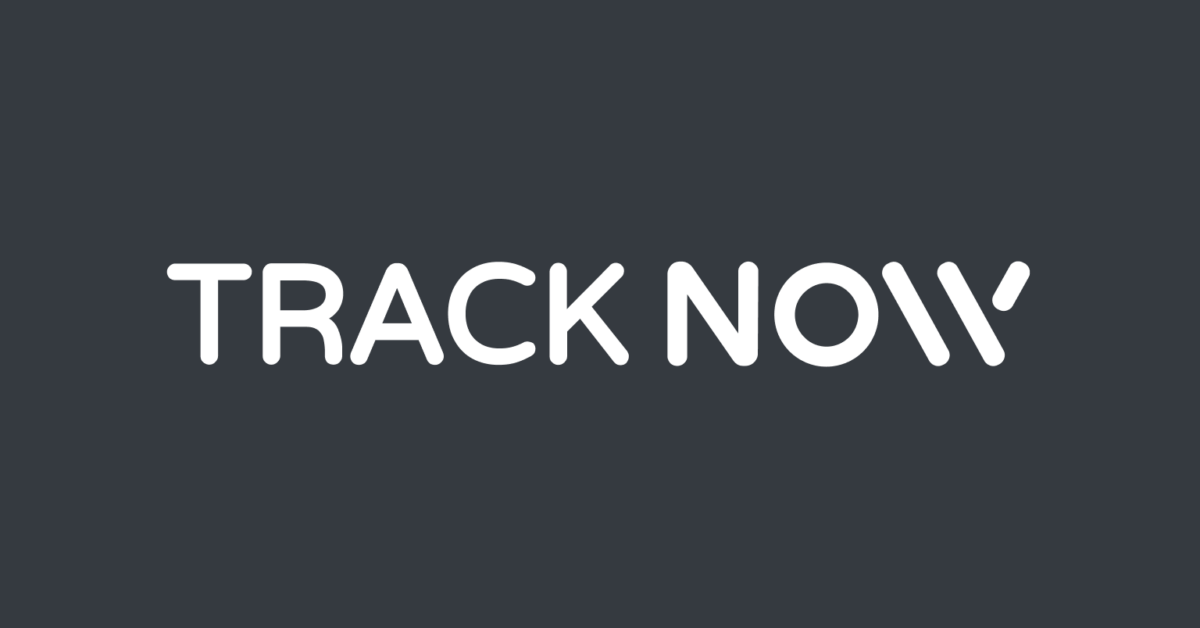
Overview
Trackdesk has impressively emerged as a mature and robust platform in the affiliate marketing landscape, despite its relative newness and minimal online footprint, surpassing our typical expectations for such early-stage software. The Trackdesk dev team was the entirety of the company for the first six months, and they kept their heads down and eyes on the prize. They coded and tested and brought beta clients on to test some more and then the devs coded some more until they got it right. No time for interviews, no time for marketing. We imagine there were a lot of energy drinks involved, as well. It's clear their relentless dedication and hard work have paid off, culminating in a product that is truly remarkable and far exceeds expectations for such a nascent platform.
Trackdesk was conceived to be an answer to all the bloated affiliate platforms out there, the ones doing way more than what a significant chunk of the e-commerce industry actually needs. A small retail startup doesn’t need many of the bells and whistles that come with more robust platforms—just a reliable way to generate and distribute referral codes and links. By keeping the platform focused on affiliate marketing’s main functions, Trackdesk is poised to attract a ton of small biz ecommerce shops looking to spread the word about their products.
Pricing
Trackdesk aims to cater to businesses of all sizes, offering a tiered pricing model based on the company's monthly revenue, ensuring that the services are tailored to the needs of each customer. All plan packages include popular integrations, mass payment methods, and custom reports. No credit card is required to start any plan.
Start-up package — Ideal for start-ups and solopreneurs, allowing up to $5,000 monthly revenue. Additional features include: all integrations (Stripe, WooCommerce, Shopify, Magento, and others), as well as bulk auto payouts (PayPal, Wise, and others).
Business, starting $67/mo (billed annually, with the option to pay monthly and save for 2 months) — Tailored to the needs of growing businesses generating up to $20,000 monthly revenue. This package includes all the features of the Start-up plans, plus report builder, redirect tracking, and other powerful features.
Network package — Best suited for affiliate marketing programs with demanding requirements, this plan offers unlimited monthly revenue. All features are included, plus: unlimited seats, premium support, a dedicated onboarding account manager, custom features development, and a custom domain.
The Details
It’s a misconception that making software “simple” or “streamlined” must be easy, on the assumption that coding effort is somehow correlated to how many features an application has. Maybe it takes less time—there are fewer moving parts to test—but it’s by no means easier. From a user-interface perspective, we’d argue that it's more difficult. How do you make a software platform that’s purpose-built do one or two things look like a robust business platform?
The team behind Trackdesk has an answer for that question: You make it so the first thing users see is how much the software is doing for you.
Of course, this isn’t the very first thing you’ll see—there’s the obvious point of having to set everything up and recruit affiliates. Which brings us to the second thing you have to keep in mind for the user experience: if it’s hard to set up, no one will stick around to see if it’s easy to actually use. Trackdesk succeeds here, too: the interface is clean and attractive, in a minimalist way, and users will feel right at home quickly. If they don’t, there’s a comprehensive “guided tour” to help you get oriented. And if you’re still feeling lost, Trackdesk offers onboarding support.
You likely won’t need any outside assistance, though: the guided tour should be enough for anyone. It walks you through the entire setup process: localization options, conversion types (lead vs. sale vs. free trial), affiliate tiers, payment methods, terms and conditions—even the campaigns (called “Offers” here) themselves. One criticism we have here is the creation of Affiliate Tiers as a global setting, rather than defining the affiliates for each Offer. Trackdesk is pretty flexible in how it works with conversions, so it’s near impossible to foresee every possible payout. And it asks you to define this before you even set up an Offer, which feels like putting the cart before the horse. Now, we’re not saying it’s bad that you’ll have to define more affiliates later on—that’s a given. It’s that the workflow regarding this is a bit wonky for our tastes. Better to leave the Affiliate Tier out of the global setup, and let that remain part of creating an Offer. The tiers and groups you create could always exist globally from there, allowing you to use what you’ve already created for future offers but done in a way that makes more logical sense. As it stands now, you need to exit out to Trackdesk’s settings page, and create the new tier there.
That criticism is a minor nuisance, though, and made possible by the fact that Trackdesk is much more flexible than we could have imagined. When someone tells you they created an Affiliate Marketing platform that’s singularly focused, free from feature-bloat, we naturally assume that it’s just an uncomplicated program you’ll be making: give links to affiliates, track conversions based on those links, payout a percentage of the sale. But Trackdesk lets you get deep in the weeds here, allowing for recurring revenue/payouts (think SaaS and other subscription products), rewards for converting even a free trial, sales leads, user registration, and more. And the payouts are equally flexible, allowing for a one-time reward, recurring rewards for a duration you define, or free product, whatever you can dream up.
Another great feature is Trackdesk’s ability to handle multiple locations, languages, and currencies. Each offer has its own localization setting, targeting affiliates in different countries, each with its own landing page. Trackdesk’s ability to store creatives for your Offers, which the affiliates can use to aid in their efforts, means you can be prepared for any locality—an absolute must for ecommerce. A savvy small business owner could establish a global retail presence simply by using Trackdesk and any of a number of online translation tools.
The last thing worth noting here is that Trackdesk's ease of use applies to the affiliates, too. With a mobile optimized portal (that looks great on desktop, too), affiliates will be able to peruse all the offers they’re eligible to participate in. The portal makes it a breeze to get at referral links and all the creatives, giving your affiliates a copy-and-paste workflow to create social posts, texts, Whatsapp blasts, anywhere they’re communicating with other people. If they do have issues, there’s a feature where Trackdesk admins can “impersonate” the user to have a look at their portal and see what could be going wrong. If it’s not easy for everyone, it’s not worth it for anyone—kudos to Trackdesk for understanding this and doing things right.
Integrations
As the platform evolves, Trackdesk is continually expanding its portfolio of direct integrations, consistently broadening its reach to accommodate more platforms. Shopify, WooCommerce, Magento, Tipalti, and Stripe can all connect with Trackdesk “out of the box.” For payouts, only PayPal is supported.
That said, there are two other mitigating factors here to note. First, Trackdesk also integrates with Zapier, the API middleman for apps that don’t natively play well together. Through Zapier, Trackdesk can integrate with just about any other platform imaginable. It's especially helpful for users who might want to track their affiliates through a CRM, or create an affiliate-only newsletter with something like MailChimp.
The second thing to note is that Trackdesk is still young, less than a year old. As they acquire more customers, and those customers make it known which integrations they’d really like to have, it’s not out of the question for Trackdesk to listen and start creating more ready-to-go integrations as demand may indicate. They’ve been pretty open about their intention to add more features—so long as they don’t interfere with their mission of avoiding bloat—and integrations are a great way to go about that. Customers who want some kind of CRM or mailing list would be better served by a company that specializes in those kinds of things—and Trackdesk will be better served to make it as easy as possible for those integrations to happen.
Conclusion
Less than a year old, Trackdesk has emerged as a surprisingly mature and focused affiliate marketing platform. The company's approach of keeping the platform streamlined and centered around the core functionalities of affiliate marketing has paid off, attracting small business e-commerce shops looking for a reliable and efficient solution to generate and distribute referral codes and links. The software's simplicity is a standout, with a clean and attractive user interface that quickly familiarizes users with its functionality. The guided tour and onboarding support ensure a smooth setup process, ensuring that users can swiftly navigate the platform and maximize its capabilities.
Trackdesk's flexibility stands out as a key strength, allowing users to delve into various aspects of affiliate marketing, such as recurring revenue, rewards for free trials, sales leads, and user registration. The platform's ability to handle multiple locations, languages, and currencies further enhances its appeal for global retail presence. Moreover, Trackdesk's commitment to user-friendliness extends to affiliates as well, with a mobile-optimized portal that simplifies access to referral links and creatives, empowering affiliates to effortlessly promote products across different communication channels. By prioritizing user needs while avoiding feature bloat, Trackdesk has positioned itself as a promising solution for small businesses.
Trackdesk
-
Features
-
Ease of Use
-
Reporting


